Reflow Soldering
Reflow soldering is an important soldering technology in the field of electronic manufacturing, primarily used to solder surface mount devices (SMD) onto printed circuit boards (PCB).
The basic principle of reflow soldering:
The core principle of reflow soldering is to re-melt the solder paste (a mixture of solder and flux) that is pre-distributed on the PCB pads by heating, thereby achieving mechanical and electrical connections between the components and the pads. After the solder paste melts at high temperatures, the liquid solder wets, diffuses, and covers the pads and component leads, forming a solid solder joint upon cooling.
Classification of Shengdian Reflow Soldering:
Reflow Soldering with Three Temperature Zones
Reflow Soldering with Four Temperature Zones
Reflow Soldering with Six Temperature Zones
Reflow Soldering with Eight Temperature Zones
Reflow Soldering with Ten Temperature Zones
Reflow Soldering with Twelve Temperature Zones
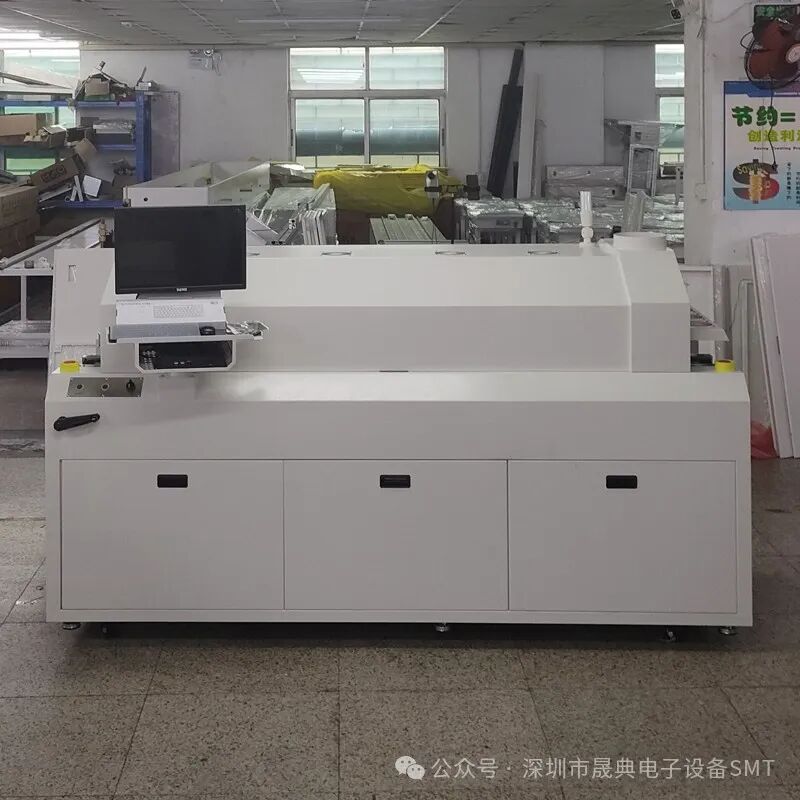
(Shengdian Reflow Soldering with Four Temperature Zones)
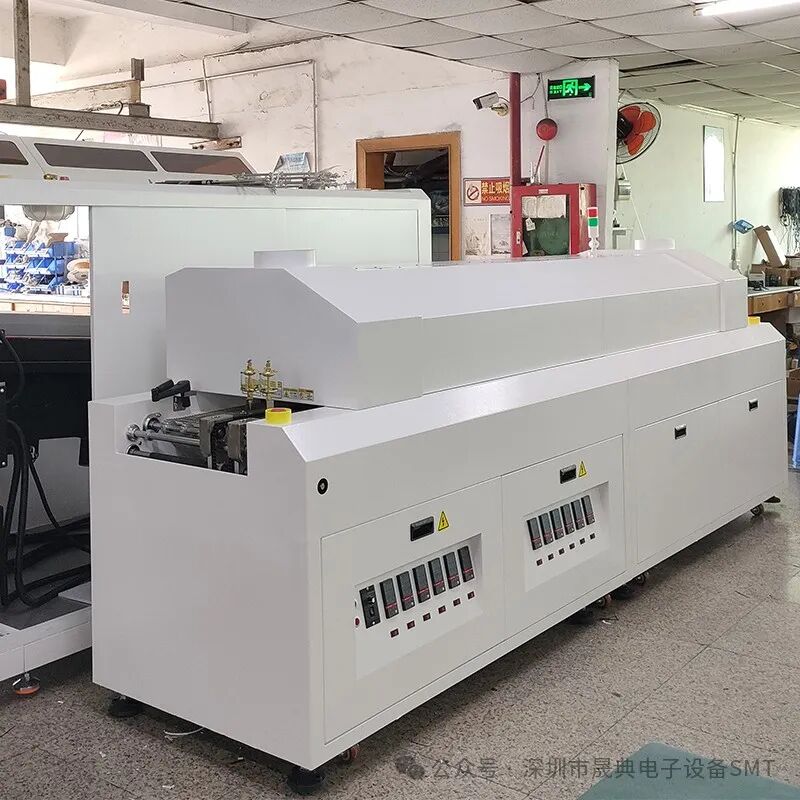
(Shengdian Reflow Soldering with Six Temperature Zones)
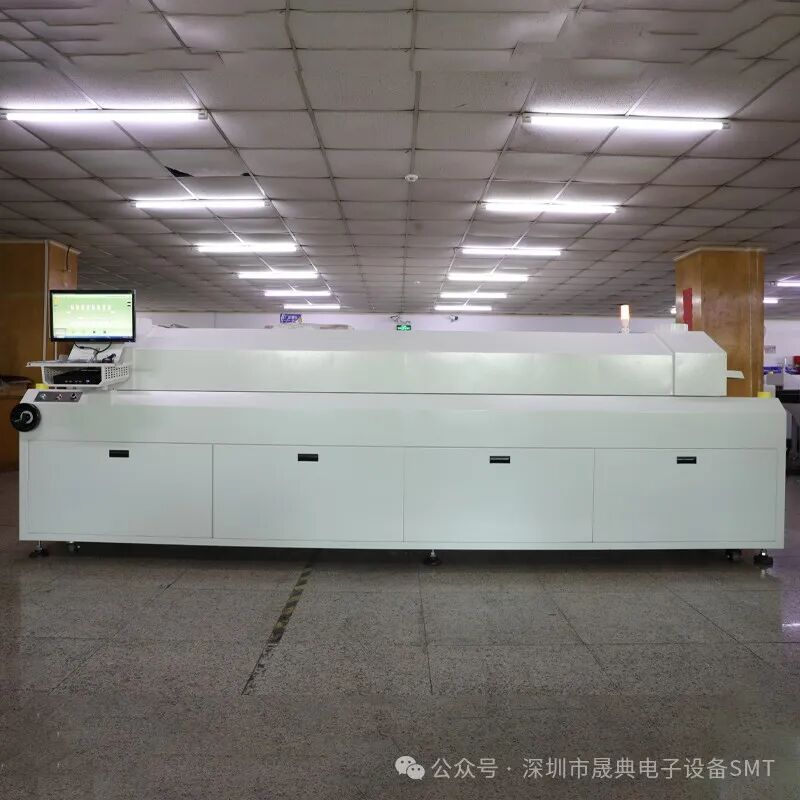
(Shengdian Reflow Soldering with Eight Temperature Zones)
Wave Soldering
Wave soldering is an automated process that achieves soldering by allowing the soldering surface of the plug-in board to come into direct contact with high-temperature liquid solder. Its core principle is to use a special device to create a wave-like phenomenon with the liquid solder, hence the name “wave soldering”.
The basic principle of wave soldering:
Wave soldering forms a wave peak with molten liquid solder (usually solder bars), allowing the printed circuit board (PCB) pre-loaded with components to pass through the solder wave at a specific angle and immersion depth, thereby achieving mechanical and electrical connections between the component leads and the PCB pads.
Classification of Shengdian Wave Soldering:
Wave Soldering 200N
Wave Soldering 250N
Wave Soldering 300N
Wave Soldering 350N
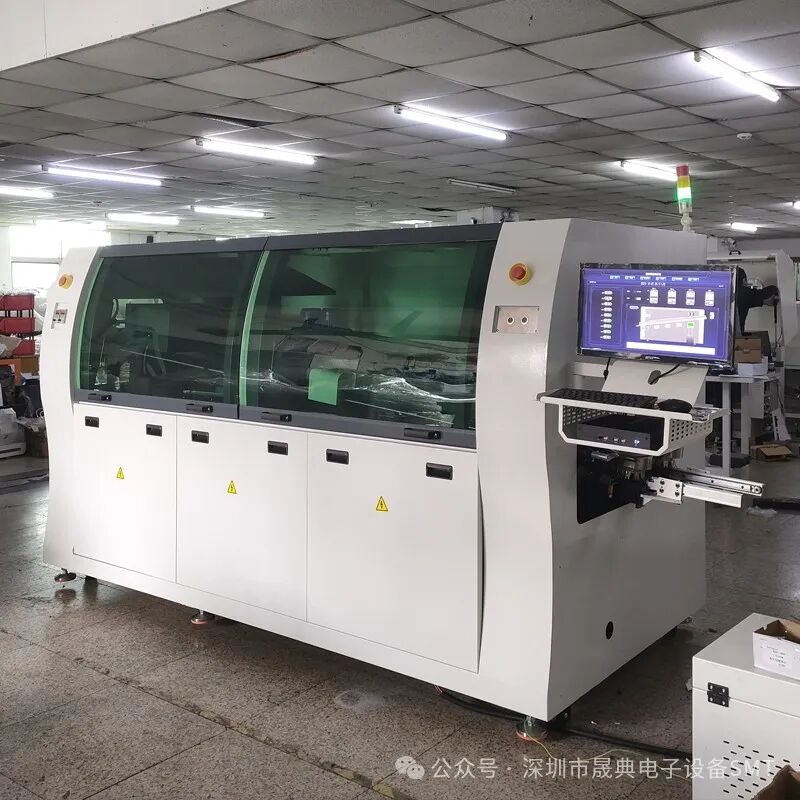
(Wave Soldering 350N)
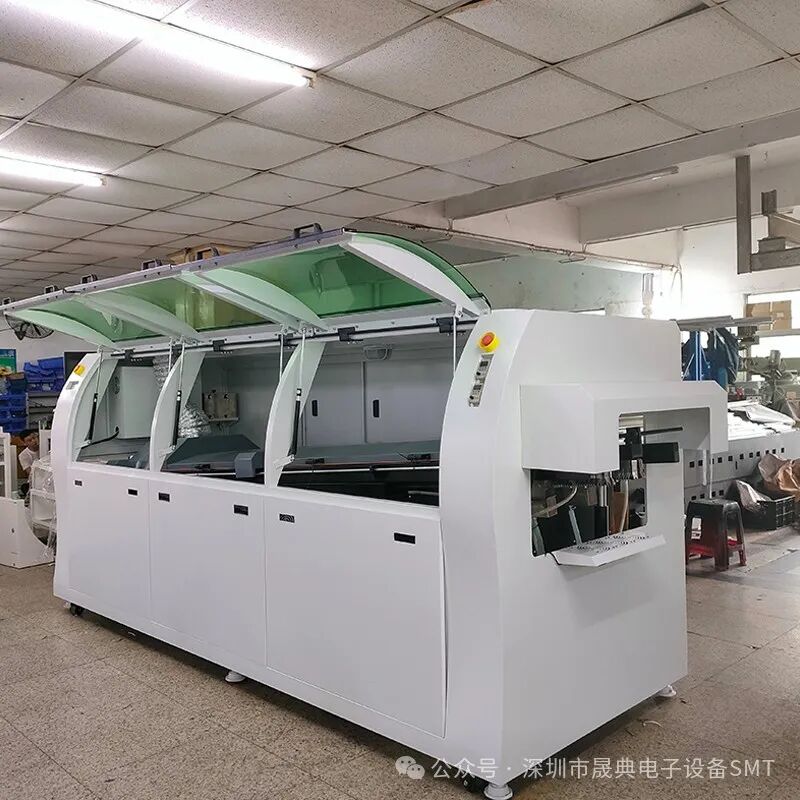
(Wave Soldering 350N)
Both reflow soldering and wave soldering belong to soldering equipment, and their differences can be summarized as follows:
1. Different principles
Reflow Soldering: This refers to melting the solder paste pre-coated on the pads through heating, achieving electrical interconnection between the leads or solder ends of the electronic components pre-mounted on the pads and the PCB pads, thus soldering the electronic components onto the PCB.
Wave Soldering: This uses a pump to create a wave of molten solder, allowing the leads of the electronic components to pass through the solder wave, achieving electrical interconnection between the electronic components and the PCB.
2. Different applications
Reflow soldering is suitable for surface mount electronic components.
Wave soldering is suitable for through-hole electronic components.
3. Different functionalities
Reflow soldering passes through preheating, reflow, and cooling zones.
Wave soldering is suitable for hand-inserted boards and dispensing boards, and requires all components to be heat-resistant; components that have previously had SMT solder paste cannot be on the wave surface.